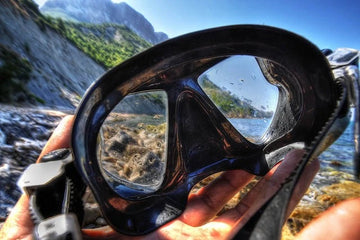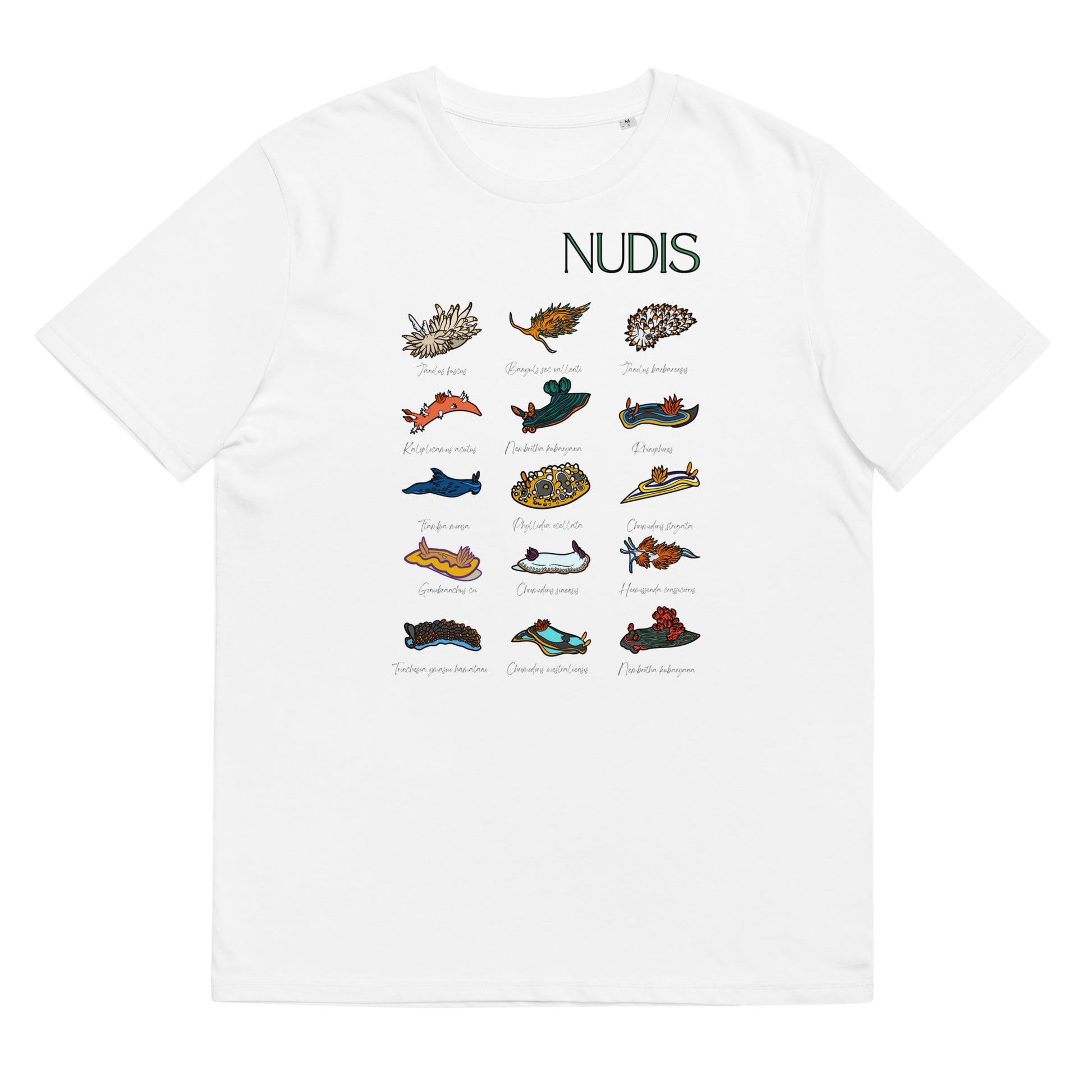This is one of the most common questions asked to scuba retailers, especially by those who are just learning to dive. Which mask should I buy? Which one do you recommend?

These tips will be very useful if you decide to buy a diving mask. They will help you to know what are the options that exist today in the market and, if you want, buy them directly with the links that we provide.
T-shirts designed by divers for divers
VIEW MORE T-SHIRTS FOR DIVERSThe choice of a diving mask is not a trivial matter. The really good ones are not cheap, but you can also choose a great and expensive mask, made with the best materials, and in the end it is not the right one for you. Spending a dive like the one in the picture above is not pleasant, the purpose of diving is not to spend half a dive emptying it. The diving mask is a very important element of the diving equipment and probably the one that causes more problems and complicates dives.
What is the best one to buy? In my opinion, the best diving mask is the one you don't have to touch in the water, the one you feel comfortable with, the one you forget about as soon as you enter the water. For one person it might be the latest €100 model and for another it might be an old mask his father used to wear. There is no ideal model, but there is your ideal model. Most experienced divers have had several before they found THE mask (and when they lost it or it broke and they really missed it).
If the mask is constantly fogging, it will ruin your dive. If it fogs up within a minute of entering the water, it will be a nearly useless dive. If it hurts you or prevents you from equalizing, you must stop the dive.
How do I try on my diving mask?
As a general rule, it is recommended that you try on the mask and breathe through your nose; if the mask stays on your face, it may be your mask. But this universal test only proves that the mask seals well out of the water and is probably your size, so don't rely on it alone. Not all diving masks are designed and manufactured the same, nor do they have the same styles and features. Also, not all divers are the same, dive the same way, or use the mask for the same purpose.
Hoodies Designed for the Deck of Your Liveaboard
SEE MORE SWEATSHIRTS FOR DIVERSThe first step is to find out what materials the mask is made of. The lenses of the mask must be made of tempered glass, because it is more difficult for them to be scratched and it is more difficult for them to fog up. In large non-specialized sports stores they usually sell masks with plastic lenses, do not buy a mask with plastic lenses. They will not last long. On the other hand, the vision with these masks will not be clear and they will fog up more easily. They are great for your kids to snorkel at the beach, but not for diving.
Next, look at the skirt (the part that attaches to your face) and what material it is made of. This skirt must be silicone (each manufacturer gives a name to the silicone they use, just make sure it is silicone), never plastic as it will last much less and flood more often. When trying on the mask, make sure that the silicone does not bend and that it sits firmly on both your forehead and cheekbones. Also, make sure the bottom of the mask is not too close to your lips. Remember that you will be wearing an underwater regulator that will change the size and position of your mouth, which will affect the shape of the mask. In fact, I recommend that you do this exercise when you are in a tent, pretend you are wearing the regulator and make sure that the silicone fits your face perfectly and that there are no leaks.
If the silicone fits well on your face and doesn't bother your mouth, it's time to place the strip on the back of your head. Make sure that the silicone does not touch the line where your hair begins on your forehead and that the strips do not touch or bother your ears. Then, breathe in through your nose again to secure the mask to your face, paying attention to the bridge and base of your nose. If you find that the mask touches you, it is very possible that the water pressure is hurting you and making you uncomfortable while you are diving, if so, this is not your mask.

Pic by kate at yr own risk
If the mask does not bother you at the bridge or base of the nose, you can move on to the next square. Now equalize as you would when descending. Most people equalize by doing the Valsalva maneuver, so if this is your case, try pinching your nose and equalize. If you get it right, if you can pinch both nostrils properly to equalize, go ahead, if not, try another mask. Another aspect to consider at this point is the amount of air in the mask: in general, the less air there is, the clearer your vision should be, the easier it will be to equalize, and the faster the deflation will be.
Last but not least, look around! That's what the mask is for, right? Look both ways, up and down. If you see well, have a good field of vision, and feel comfortable, go ahead, you know it's your mask.
In this sense, if you normally wear contact lenses for diving, you may be interested in buying a scuba mask that allows you to change the lenses for prescription lenses, which would allow you to remove the lenses during dives (it is very annoying to wear contact lenses and have problems with them underwater) and put on prescription lenses.
A few final recommendations about testing the mask, and this also affects the price. You can try the mask in the store or buy it directly from an online store, they usually have discounts for new customers by registering. This way you can try it on at home with the regulator you use for diving and if it does not fit you can return it without having to return to the store.
Which diving mask should I buy?
Once we know how to try on the mask, which one is the best for me? Which one do I choose among the 100 in the store, considering that there are about 7 different types of recreational diving masks (even more for professionals) that differ in price, quality of materials, size of the field of vision, type of diving? Yes, 20 years ago there was not so much to choose from and diving with THE diving mask, today there are almost more types than flavors of chewing gum, so we will try to show the different types of the most common diving masks, their use and two recommendations for each type.
Mugs for Ocean Lovers
SEE MORE MUGS FOR DIVERSSingle crystal mask
These masks have a single lens, providing a wider field of vision than those with two lenses, and have the advantage of not having a junction between the two lenses that can hurt the bridge of the nose. Older models had a lot of space between the face and the lenses, making the view less clear and more difficult to clear, but the ones being manufactured now have very little space.
 |
 |
| Cressi F1 frameless Check updated prices |
Mares Essence Liquidskin Check updated prices |
Double lens mask
Double lens masks are probably the most popular, mainly because there is more variety and they usually have less space between the lenses and the eyes, which improves vision and sharpness, and they are very easy and quick to empty. In addition, their lenses can be changed for prescription lenses (although not in all models). Recently, micromasks have become popular, with a minimal amount of air giving clearer vision, and those who have tried them say they do not change.
 |
 |
| Aqualung Reveal 2 Check Updated prices |
Cressi Nano Check updated prices |
Extended field of view mask
These masks may have one or two tear-shaped lenses that provide a wider field of vision. These lenses can usually be replaced with prescription lenses.
 |
 |
| Cressi Evo Big Eyes Crystal Check updated prices |
Beuchat Maxlux Check updated prices |
Mask with purge valve
It may seem useless to have a purge on a mask since the mask clearing maneuver that you learn on the first day of the course is quite simple, but as we have said, in the world of masks there is something for all tastes, needs and types of diving. These masks have a purge under the nose (some are on the cheek) that allows the mask to be emptied quickly when filled with water. There are some divers who use them for photo shoots, when they spend a long time in the same position waiting for the moment to take the picture, but this is not the mask you will see the most when you go diving.
Frameless masks
Frameless masks are also becoming very popular because of their very low weight, the small space between the lens and the eyes, their flexibility, and the fact that you can put them in any pocket, making them a good "backup" mask. They are also very comfortable and hydrodynamic.
 |
 |
| Scubapro frameless Check updated prices |
Atomic Aquatics Check updated prices |
Data mask
Finally, for the recreational diver, we have the Data Mask, masks that incorporate the dive computer and you can see all the data related to your dive directly on the mask, on an LCD screen that you can see by slightly lowering your gaze. Pressure, depth, deco, time.... The main advantages are that you have your hands free for your camera or lights without having to look at the computer on your wrist, the disadvantage is the price, 10 times more than any extraordinary mask.
Freediving masks
The main feature of apnea masks is that they minimize internal volume to allow for faster equalization, resulting in less air expended during descent and a larger field of view.
 |
 |
| Cressi Perla Check updated prices |
Sporasub Butterfly Check updated prices |
Every time you make a purchase through some links added to the text, we receive a commission thanks to affiliate agreements. You can read our commercial policy here.



























